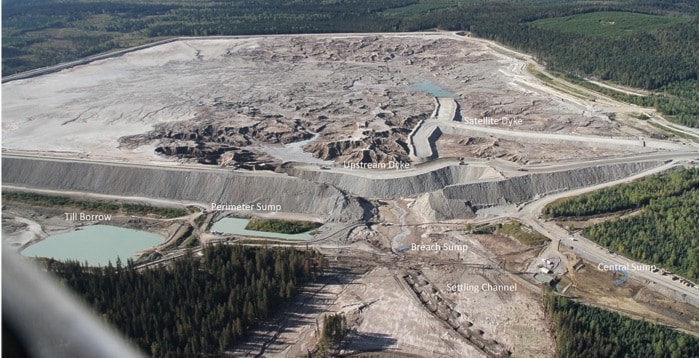The Mount Polley mine dam failed because of an overlooked glacial material layer in the foundation and a series of steep additions that eventually overcame it, an independent engineering review has concluded.
"Basically the weight of the dam was too much for the weak materials in the foundation to bear," said U.S. consulting engineer Steven Vick, one of three experts called in to examine the failure that caused the dam to breach and fail in August 2014.
The report concludes that the concrete-like glacial till material in the base of the dam wasn't understood in enough detail when the dam was designed and built in 1997. Later raising of the dam to hold more water and tailings weakened the base layer and led to the failure.
Vick said the additions to the dam were built at a steeper slope than the original dam, and plans to buttress the area were delayed until it was too late.
Energy and Mines Minister Bill Bennett said the report shows there were no warning signs, and no surface inspections could have detected the problem that was overlooked in the design and original construction.
Two more investigations of the mine failure are pending. Bennett said the Chief Inspector of Mines is likely to release his report by June, and the Conservation Officers' Service will also report when its investigation is complete.
Bennett said the government is willing to see the Mount Polley mine reopen, but the other investigations must be complete first. The parent company Imperial Metals has applied to use an existing pit to store tailings and resume operations without using the original tailings pond again.
